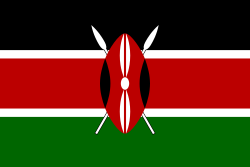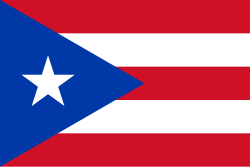200 meter för herrar i friidrott vid olympiska sommarspelen 1988
| Herrarnas 200 meter vid de XXIV:e olympiska sommarspelen | ||||
| Anläggning | Seouls Olympiastadion | |||
|---|---|---|---|---|
| Datum | 26 september 1988 (kval och kvartsfinal) 28 september 1988 (semifinal och final) | |||
| Deltagare | 72 från 54 nationer | |||
| Vinnartid | 19,75 OR | |||
| Medaljörer | ||||
| ||||
| ||||
| ||||
| ← 1984 1992 → | ||||
| Friidrott vid olympiska sommarspelen 1988 | ||||
| ||||
|---|---|---|---|---|
| ||||
| ||||
| ||||
| ||||
| ||||
| ||||
| ||||
200 meter för herrar vid olympiska sommarspelen 1988 i Seoul avgjordes 28 september.
Medaljörer
| Gren | Guld | Silver | Brons | |||
| 200 meter | Joe DeLoach | 19,75 OR | Carl Lewis | 19,79 | Robson da Silva | 20,04 |
Resultat
- Q innebär avancemang utifrån placering i heatet.
- q innebär avancemang utifrån total placering.
- DNS innebär att personen inte startade.
- DNF innebär att personen inte fullföljde.
- DQ innebär diskvalificering.
- NR innebär nationellt rekord.
- OR innebär olympiskt rekord.
- WR innebär världsrekord.
- WJR innebär världsrekord för juniorer
- AR innebär världsdelsrekord (area record)
- PB innebär personligt rekord.
- SB innebär säsongsbästa.
- w innebär medvind > 2,0 m/s
Final
| Placering | Final | Tid |
|---|---|---|
| 19,75 (OR) | ||
| 19,79 | ||
| 20,04 | ||
| 4. | 20,09 | |
| 5. | 20,39 | |
| 6. | 20,40 | |
| 7. | 20,51 | |
| 8. | 20,58 |
Semifinaler
| Placering | Heat 1 | Tid |
|---|---|---|
| 1. | 20,23 | |
| 2. | 20,28 | |
| 3. | 20,43 | |
| 4. | 20.54 | |
| 5. | 20.59 | |
| 6. | 20.62 | |
| 7. | 20.69 | |
| 8. | 21.23 |
| Placering | Heat 2 | Tid |
|---|---|---|
| 1. | 20,06 | |
| 2. | 20,33 | |
| 3. | 20,50 | |
| 4. | 20.51 | |
| 5. | 20.57 | |
| 6. | 20.67 | |
| 7. | 20.77 | |
| 8. | 20.84 |
Kvartsfinaler
| Placering | Heat 1 | Tid |
|---|---|---|
| 1. | 20,57 | |
| 2. | 20,61 | |
| 3. | 20,62 | |
| 4. | 20.73 | |
| 5. | 20.94 | |
| 6. | 21.23 | |
| 7. | 21.26 | |
| 8. | 21.46 |
| Placering | Heat 2 | Tid |
|---|---|---|
| 1. | 20,48 | |
| 2. | 20,54 | |
| 3. | 20,70 | |
| 4. | 20.79 | |
| 5. | 21.19 | |
| 6. | 21.34 | |
| 7. | 21.35 |
| Placering | Heat 3 | Tid |
|---|---|---|
| 1. | 20,49 | |
| 2. | 20,59 | |
| 3. | 20,80 | |
| 4. | 20.81 | |
| 5. | 20.94 | |
| 6. | 20.95 | |
| 7. | 21.40 | |
| 8. | 21.93 |
| Placering | Heat 4 | Tid |
|---|---|---|
| 1. | 20,56 | |
| 2. | 20,77 | |
| 3. | 20,92 | |
| 4. | 20.98 | |
| 5. | 21.08 | |
| 6. | 21.35 | |
| 7. | 21.38 | |
| 8. | 22.25 |
| Placering | Heat 5 | Tid |
|---|---|---|
| 1. | 20,41 | |
| 2. | 20,67 | |
| 3. | 20,74 | |
| 4. | 20.81 | |
| 5. | 20.87 | |
| 6. | 21.01 | |
| 7. | 21.18 | |
| 8. | 21.39 |
Referenser
| ||||||||
Media som används på denna webbplats
An icon that represents a gold medal
An icon that represents a silver medal
An icon that represents a bronze medal
The flag of Brazil from 1968 to 1992 with 23 stars.
Kanadas flagga, införd 1965; denna version med Pantone‐nyanser. Nuvarande utformning ersatte den tidigare kanadensiska Red Ensign.
Variant version of a flag of Japan, used between January 27, 1870 and August 13, 1999 (aspect ratio 7:10).
Variant version of a flag of Japan, used between January 27, 1870 and August 13, 1999 (aspect ratio 7:10).
Chinese Taipei Olympic Flag. According to the official website of Chinese Taipei Olympic Committee, Blue Sky(circle) & White Sun(triangles) above the Olympic rings is neither the National Emblem of the Republic of China, nor the Party Emblem of Kuomintang (KMT), but a design in between, where the triangles do not extend to the edge of the blue circle, as registered at International Olympic Committee in 1981 and digitally rendered in 2013. Besides, the blue outline of the five-petaled plum blossom is broader than the red one. Moreover, the CMYK code of the blue one and the Blue Sky & White Sun is "C100-M100-Y0-K0", and different from the Olympic rings (C100-M25-Y0-K0). Note that it's the only version recognized by IOC.
Burkina Fasos flagga
Flag of Portugal, created by Columbano Bordalo Pinheiro (1857–1929), officially adopted by Portuguese government in June 30th 1911 (in use since about November 1910). Color shades matching the RGB values officially reccomended here. (PMS values should be used for direct ink or textile; CMYK for 4-color offset printing on paper; this is an image for screen display, RGB should be used.)
The civil ensign and flag of Belgium. It is identical to Image:Flag of Belgium.svg except that it has a 2:3 ratio, instead of 13:15.
Flag of Senegal
Flag of Jamaica. “The sunshine, the land is green, and the people are strong and bold” is the symbolism of the colours of the flag. GOLD represents the natural wealth and beauty of sunlight; GREEN represents hope and agricultural resources; BLACK represents the strength and creativity of the people. The original symbolism, however, was "Hardships there are, but the land is green, and the sun shineth", where BLACK represented the hardships being faced.
Flag of South Korea from 21 February 1984 to 15 October 1997, when the exact colors were specified into their shades.
The flag of Brazil from 1968 to 1992 with 23 stars.
1910 Flag of Bermuda (with smaller coat of arms)































